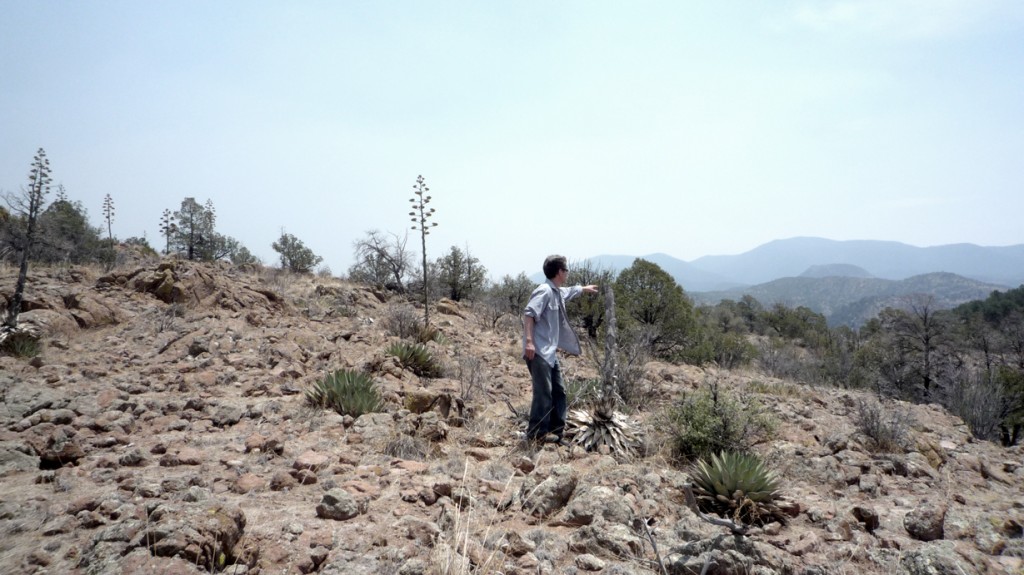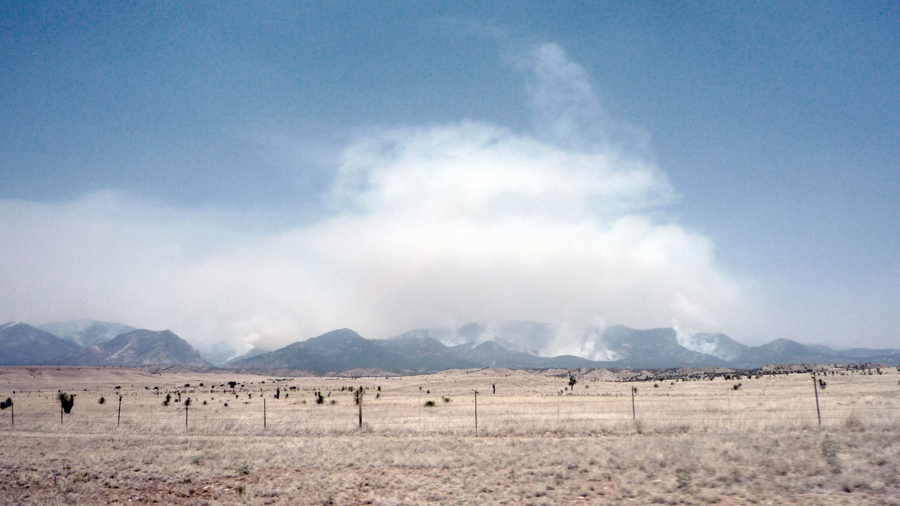
The fires are burning the core of the Gila Wilderness. Just waited in line at a pubic toilet with a crew of Hopi Nation Firefighters. How contracts are given. How local communities are financed by the fires. How rehab of fire is structured. How fires were suppressed. How large timber was cut, how ‘dog hair’ trees come back and provide fodder. How all the big mills are gone. How now, 4000,000 acres will burn. How this will be good in some ways for the forest,. How there’s a chance to “start over.”
The fires should burn, even I knew that, they need to burn at this point bad once and for all, and then not so bad in the future. It’s good for the ecosystem, It’d even be good for cattle, in case they feel excluded from this discourse.
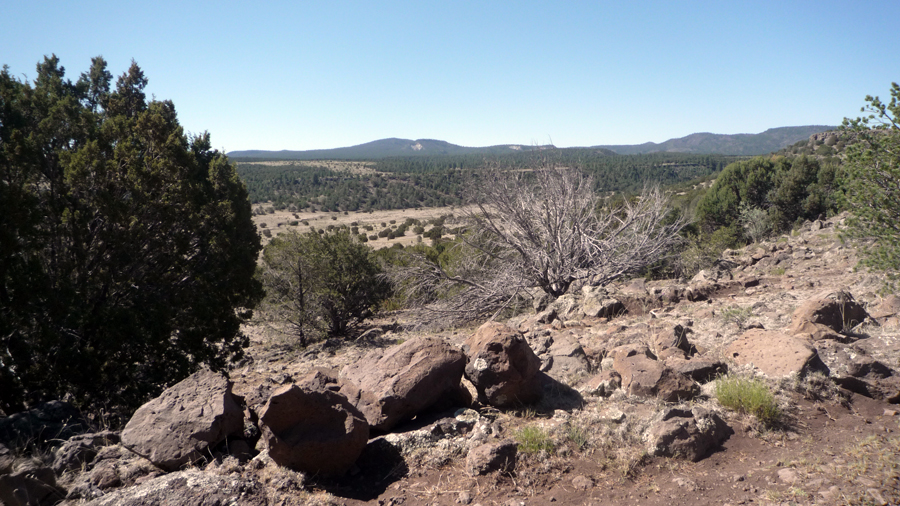
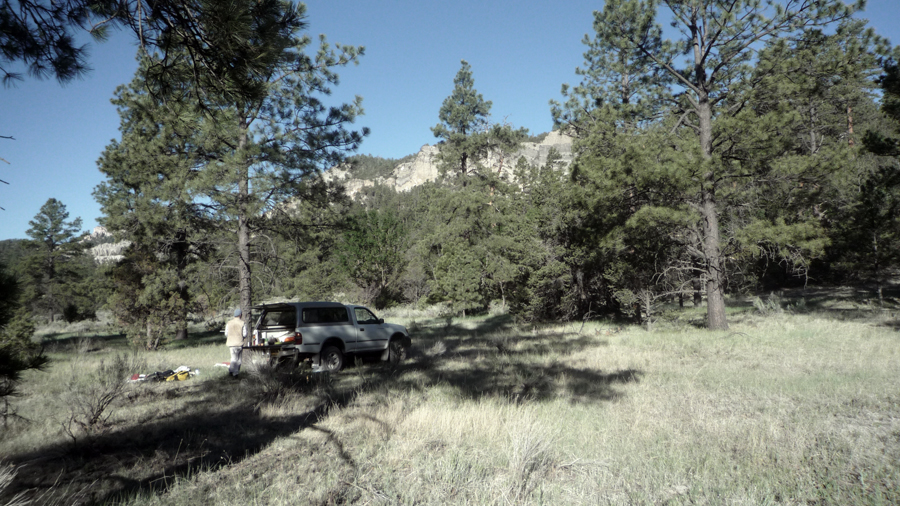
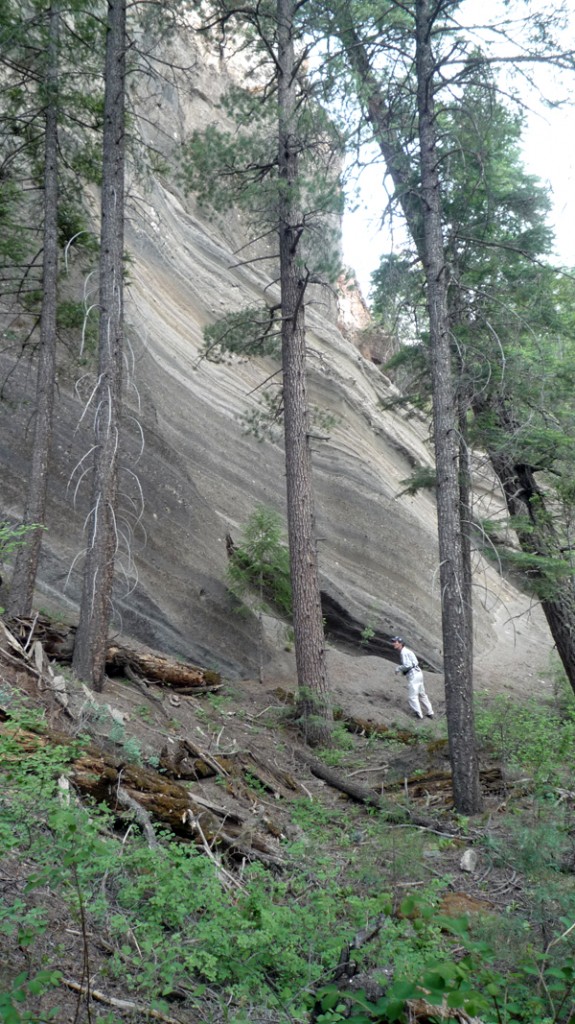
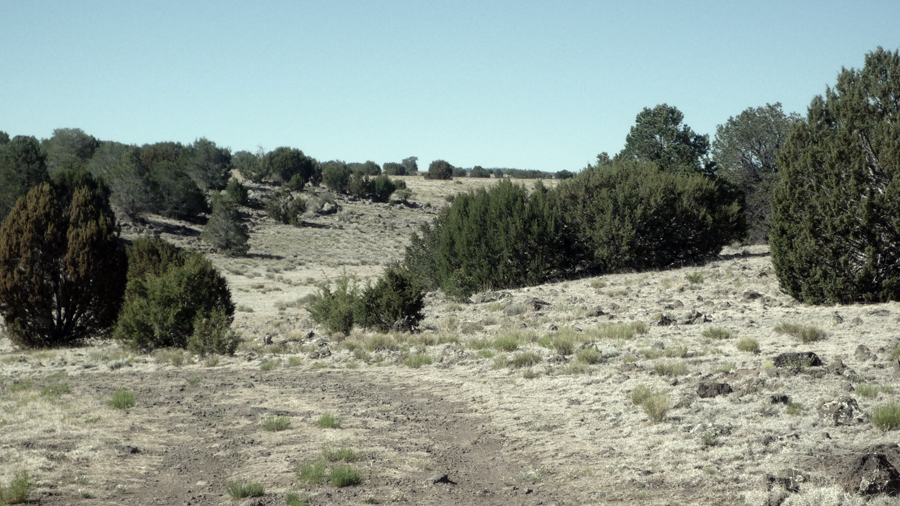
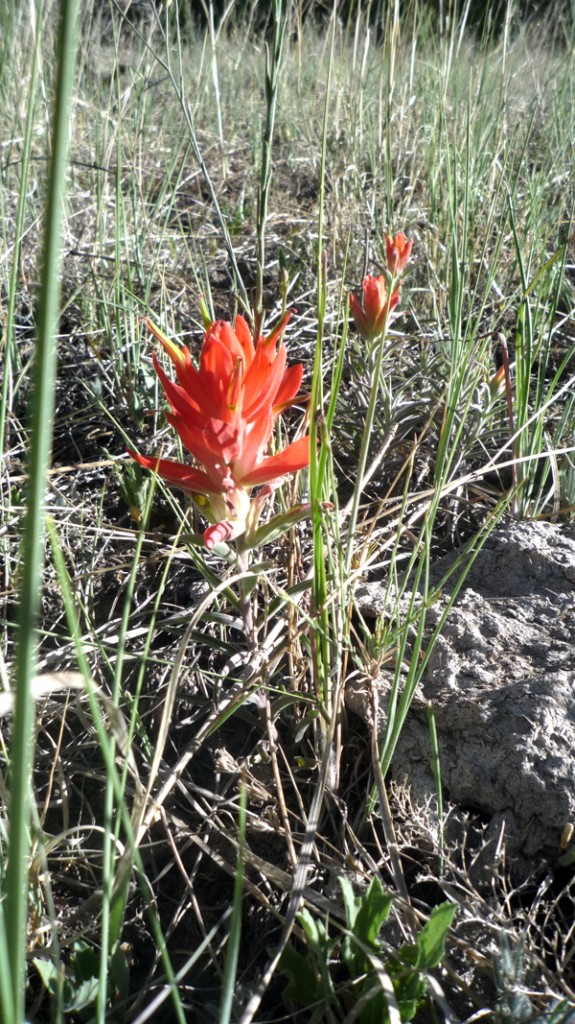


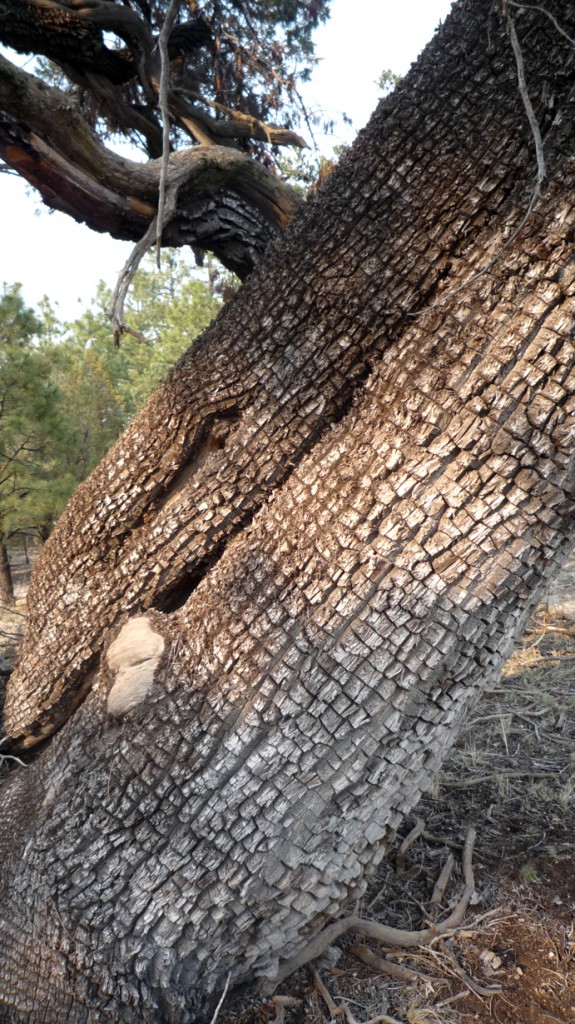
And, uh, the wolves.
I feel sorry for them.
What is prime wolf habitat?
This is what I am gathering:
It’s the same as the sort of habitat that cattle and elk like. Open areas. Think of a long open runway with forested patches on either side. Nice grass lands, good vistas to survey. Clusters of hiding areas but not too dense. Not too rough, or a pack can’t run. Some release areas for the wolves are occurring in habitat they might not select. They hope the female is already pregnant, and will want to den as soon as possible. They are often released in a netted “pen,” which they will chew their way out of. What happens in the mind of wolf when s/he is released?
We left the Spur Lake Basin area to head east and a bit south, when we saw a pick up truck stopped at the T where the dirt road met a paved one. Michael thought it might’ve been the rancher, but it was Jess Carey, Catron County’s Wolf Incident Investigator. He was out on the allotment checking up on a cow predation. Bear.
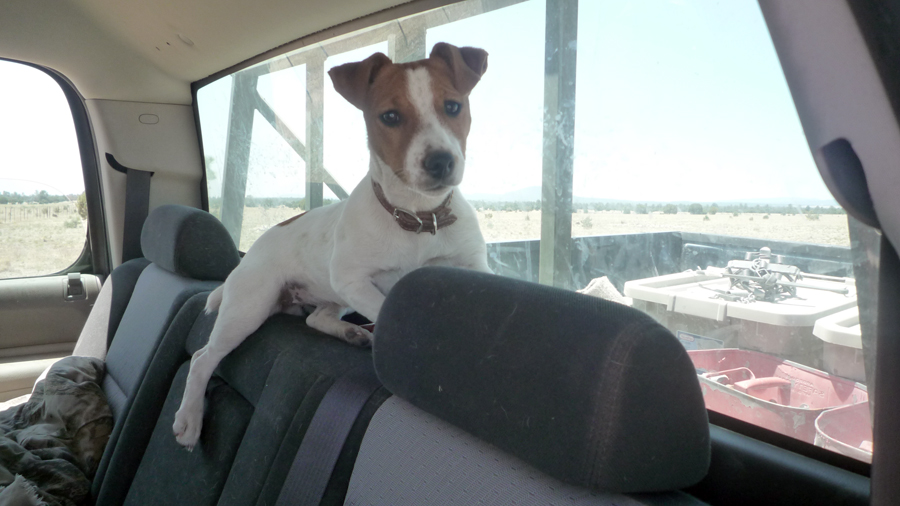
There is something about the wolf reintroduction program that feels like a video game.
Pick them up, put them down, uh oh, 3 strikes you are out, take you back out, move you, power you up with some supplemental food, oh – you got killed, who killed you. Now, sneak in that den and inoculate your wolves. and so on. What’s the hold up? Where are the replacements???
I apologize. There are animals whose lives are at stake. There are serious measures people worked hard on (see the Mexican wolf management SOP guidelines from Fish and Wildlife. I am sure people are doing their best to respect the highly constructed and constricted chalenges of managing an ‘experimental, non-essential” population of animals.
The non-essential experimental population designation for Mexican wolves allows for greater management flexibility to address conflict situations, such as livestock depredations or nuisance behavior, than if wolves had retained the fully endangered designation. (FWS)
To give some idea about the language, participants, polarizations, I’m including some excerpts from a few local texts.
From the Federal Register, August 2010.
F + W was petitioned to relist the Mexican wolf as a distinct subspecies, which would change its status in the goings-on.
DEPARTMENT OF THE INTERIOR Fish and Wildlife Service Endangered and Threatened Wildlife and Plants; 90-Day Finding on a Petition To List the Mexican Gray Wolf as an Endangered Subspecies With Critical Habitat. AGENCY: Fish and Wildlife Service, Interior.
AGENCY: Fish and Wildlife Service, Interior.
ACTION: Notice of petition finding and initiation of status and critical habitat review.
The Mexican wolf was listed as an endangered subspecies on April
28, 1976 (41 FR 17742). The gray wolf species (Canis lupus) in North
America south of Canada was listed as endangered on March 9, 1978,
except in Minnesota where it was listed as threatened (43 FR 9607).
This listing of the species as a whole subsumed the previous Mexican
wolf subspecies listing, although it stated that the Service would
continue to recognize valid biological subspecies for the purpose of
research and conservation (43 FR 9607). We initiated recovery programs
for the gray wolf in three broad geographical regions of the country:
the Northern Rockies, the Great Lakes, and the Southwest. In the
Southwest, a recovery plan was developed specifically for the Mexican
wolf, acknowledging and implementing the regional gray wolf recovery
focus on the conservation of the Mexican wolf as a subspecies. The 1982
Mexican Wolf Recovery Plan recommended a two-pronged approach to
conservation that included establishment of a captive breeding program
and reintroduction of wolves to the wild (Service 1982, p. 28).
In 1996, we published a Final Environmental Impact Statement,
``Reintroduction of the Mexican Wolf within its Historic Range in the
Southwestern United States,'' after assessing potential locations for
the reintroduction of the Mexican wolf. On April 3, 1997, the
Department of the Interior issued its Record of Decision on the Final
Environmental Impact Statement, and on January 12, 1998, a final rule,
``Establishment of a Nonessential Experimental Population of the
Mexican Gray Wolf in Arizona and New Mexico'' (63 FR 1752), was
published and established the Mexican Wolf Experimental Population Area
in central Arizona and New Mexico, and designated the reintroduced
population as a nonessential experimental population under section
10(j) of the Act. In March of that year, 11 Mexican wolves from the
captive breeding program were released to the wild.
Back to Jess Carey at the crossroads, with our two pick up trucks side by side, baking in the hot sun. expressed his feeling of betrayal by the Fish and Game Feds, because they promised they’d take a wolf out of play if it hit livestock three times. But they stopped. And then everyone found out that the Feds were doing what’s called “diversional feeding” which is supplementing the wolves’ diet with roadkill to pull them away from any livestock temptations.
There are 50 or so collared wolves on the ground, and perhaps another 50 who are their progeny. No new wolves are being introduced in the Recovery Area, have not been for three years, and will not be for the near future until the Recovery Plan is re-authored. In the meantime, there is “inbreeding depression” and the wolves health suffers. They also suffer from parvo ,a dog-borne disease. So many issues, so much interference. There are 400 wolves in the captive program.
In 2010, then-Governor of New Mexico Bill Richardson issued an executive order banning the use of traps within the Recovery Area:
EXECUTIVE ORDER 2010-029
TEMPORARY BAN OF TRAPPING IN THE
BLUE RANGE WOLF RECOVERY AREAWHEREAS, the Mexican Gray Wolf is the smallest, rarest, and most genetically distinct subspecies of the Gray Wolf;
WHEREAS, the Mexican Gray Wolves that once widely roamed New Mexico, Arizona, Texas, and the Republic of Mexico are now nearly extinct, suffering from the results of human development, reduction in habitat, and hunting;
WHEREAS, the Mexican Gray Wolf was listed as endangered under the federal Endangered Species Act in 1976, and all known wild Mexican Gray Wolves were caught and put into a captive breeding program;
WHEREAS, the Gray Wolf species, of which the Mexican Gray Wolf is a subspecies, was listed as endangered under the New Mexico Wildlife Conservation Act in 1976;
WHEREAS, in 1998, the U.S. Fish and Wildlife Service reintroduced the Mexican Gray Wolf to a portion of its historic range in New Mexico and Arizona within the Blue Range Wolf Recovery Area (“Recovery Area”), which is comprised of the Gila and Apache National Forests;
WHEREAS, the U.S. Fish and Wildlife Service’s goal was to restore at least 100 free-roaming Mexican Gray Wolves in the Recovery Area by 2005, but as of 2010, only 39 individual Mexican Gray Wolves are surviving in the wild;
WHEREAS, pursuant to the New Mexico Wildlife Conservation Act, the State Game Commission has enacted rules which make it unlawful for any person to take (defined as harass, hunt, capture, kill, or attempt to do so) any threatened or endangered species or subspecies in the State of New Mexico;
WHEREAS, under the New Mexico Wildlife Conservation Act endangered species may only be removed, captured, or destroyed with prior authorization by permit given by the Director of the Department of Game and Fish (“Department”) where necessary to alleviate or prevent damage to property or to protect human health;
WHEREAS, trapping and snaring activities occur in New Mexico within the Recovery Area even though such activities are negatively impacting the Mexican Gray Wolf, as traps and snares do not discriminate between Mexican Gray Wolves and the game animals intended to be taken;
WHEREAS, Mexican Gray Wolves may suffer injury or death while caught in a trap or snare due to dehydration, exposure to weather, or predation by other animals;
WHEREAS, in the last eight years, in the Recovery Area located in New Mexico, there have been six confirmed and three probable Mexican Gray Wolves that have been trapped, five of which have sustained injuries from traps or snares, including two Mexican Gray Wolves that had injuries severe enough to result in leg amputations;
WHEREAS, missing toes, claws, or other injuries can inhibit the Mexican Gray Wolves’ ability to catch prey and may actually increase the risk of livestock predation, as domestic livestock are easier to capture than native prey such as elk or mule deer;
WHEREAS, Mexican Gray Wolves require adequate prey and freedom from indiscriminate traps and snares to thrive in the Recovery Area; and
WHEREAS, tourism for watching the Mexican Gray Wolf has had almost no chance to develop in New Mexico, because the Mexican Gray Wolf population has not grown as planned.
NOW THEREFORE, I Bill Richardson, Governor of the State of New Mexico, by virtue of the authority vested in me by the Constitution and the laws of the State of New Mexico, do hereby order the Department of Game and Fish to carry out the purpose of the New Mexico Wildlife Conservation Act, which requires endangered species, including the Mexican Gray Wolf, be protected and direct the Department of Game and Fish to temporarily ban trapping in the portion of the Blue Range Wolf Recovery Area located in New Mexico. The ban shall:
1. Prohibit trapping by persons licensed to trap pursuant to NMSA 1978, Section 17-5-5 and youth under the age of twelve years. This prohibition should not affect the right of a resident to trap animals in order to protect livestock, domesticated animals, or fowl. The ban shall be in effect for six months starting on November 1, 2010, while the two studies described below are completed.
2. Prohibit all methods of capturing a furbearer on land or in water, including leg-hold traps, neck and leg snares, Conibear kill traps, body-crushing traps, natural and man-made cubby sets, and other methods of trapping specified in 19.32.2.10 NMAC. The New Mexico Department of Game and Fish and the government of the United States and its agencies are exempted from this closure if the Mexican Gray Wolves require capture for medical treatment, monitoring, or relocation.
I further direct the Department to undertake a study of the various types of traps and snares allowed in New Mexico and to determine the level of risk to the Mexican Gray Wolf associated with the various traps and snares. The Department shall then pursue appropriate regulations to allow trapping within the Recovery Area only by use of traps and snares that pose minimal risk of harm or injury to the Mexican Gray Wolf.
I further direct the Department of Tourism to undertake a study on the potential economic benefits of ecotourism related to recovery of the Mexican Gray Wolf in the Recovery Area.
THIS ORDER supersedes any other previous orders, proclamations, or directives in conflict. This Executive Order shall take effect immediately and shall remain in effect until such time as it is rescinded by the Governor.
Comments from Jess Carey regarding this 2010 trap ban:
It is obvious Gov. Richardson has enacted this trap ban on his way out and at the direction of the radical wolf recovery organizations and it was probably written by them also.
What a crock, almost all the trapping injuries to wolves have been done by the federal agencies involved in wolf recovery, not the trapping public…why..because they use #7 McBride wolf traps that have larger jaws than traps allowed by state law. These agencies are exempt of state law and do what they want.
The enviro’s are punishing the trapping public for what federal agencies are doing, why? Because these same enviro’s are against trapping, hunting, ranching, farmings, off road vehicles and or anything else that uses our natural re-newable resources.
We can only pray for a decent Governor, not one that walks and talks like Richardson with the same ol tune, fiddle and guitar…but one that will see through all the enviro hype and will protect the folks living on and using the land.
“KNOW” who you are voting for..everyone should be a one man army and campaign every person you meet.
Folks, the customs of life of the people’s of the Southwest are on the line and we need a change….or it will be lost forever!
Many people’s lives depend on your vote…Let us all band together and put decent people in office that will work and protect our way of life.
I don’t know about you, but I’m tired living at the direction of the environmental radical organizations…WE out number the enviro’s, all we have to do is focus and band together and vote as one.
The only way to beat them is by electing like minded candidates.
Best wishes
Jess Carey
Now NM has a new governor who is far more sympathetic to resource interests.
DAY TWO
COYOTE PEAK, Plains of San Agustin
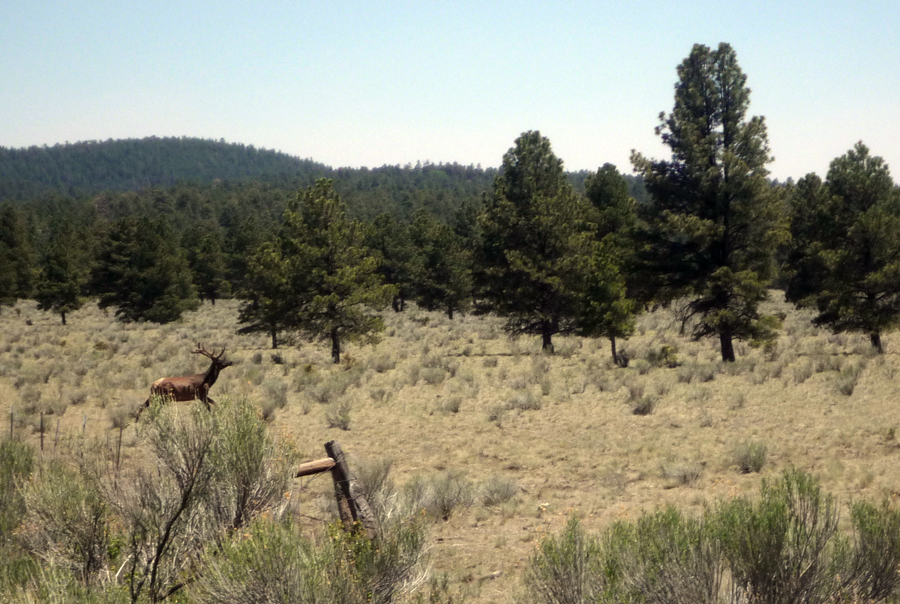
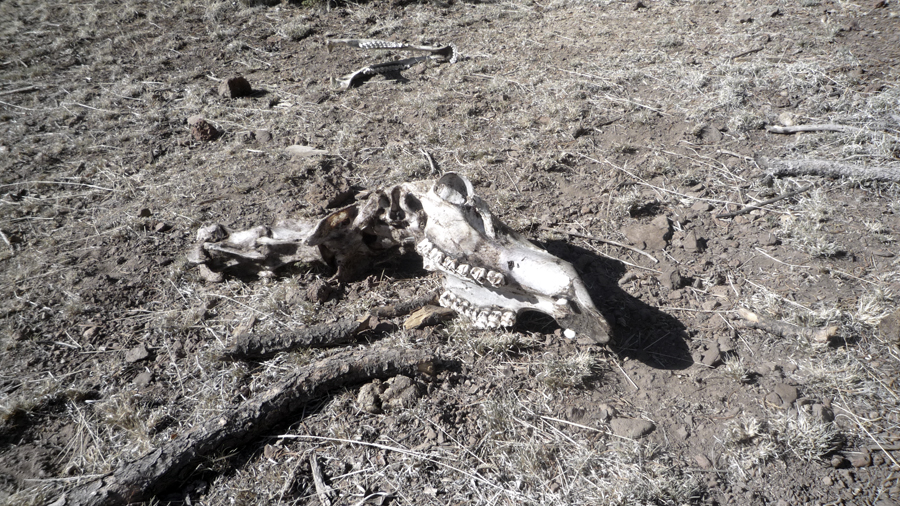
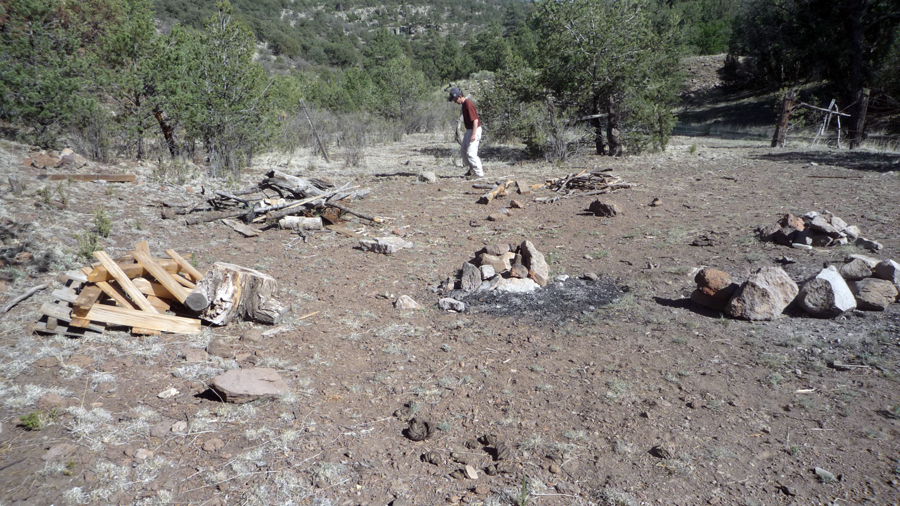
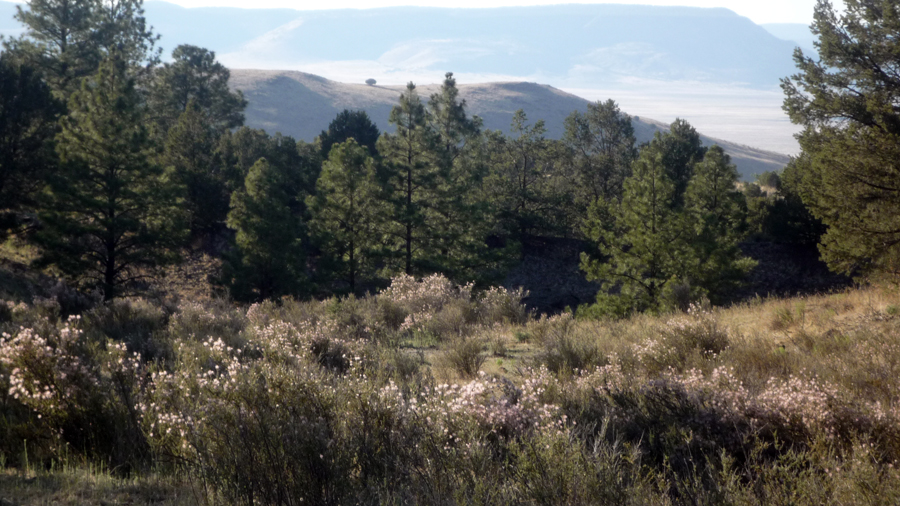
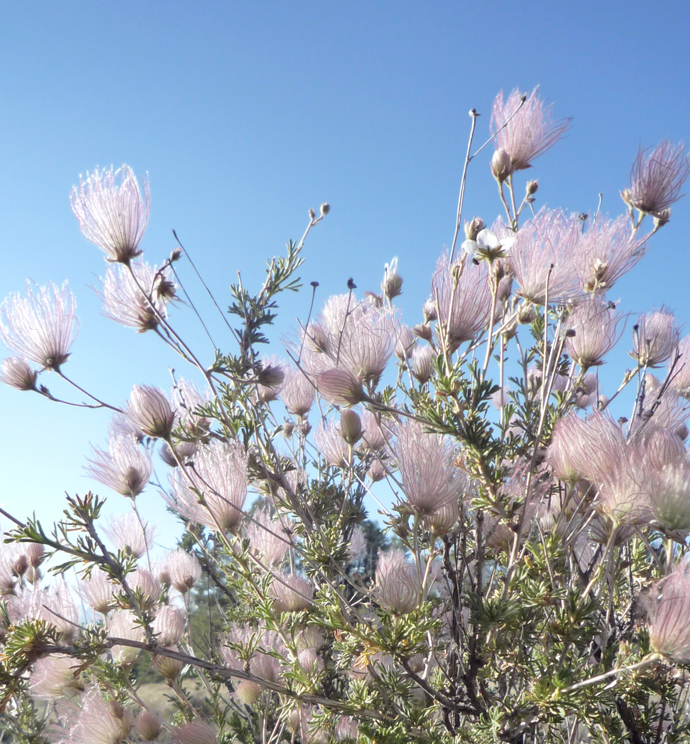
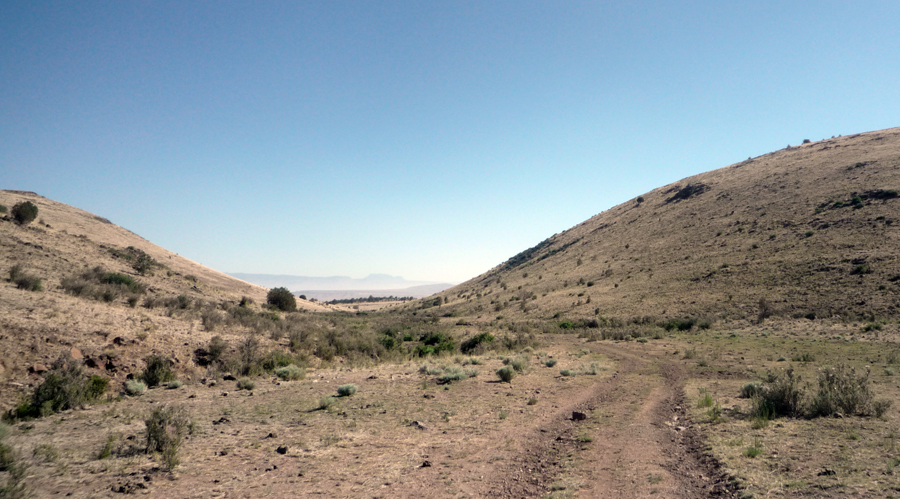
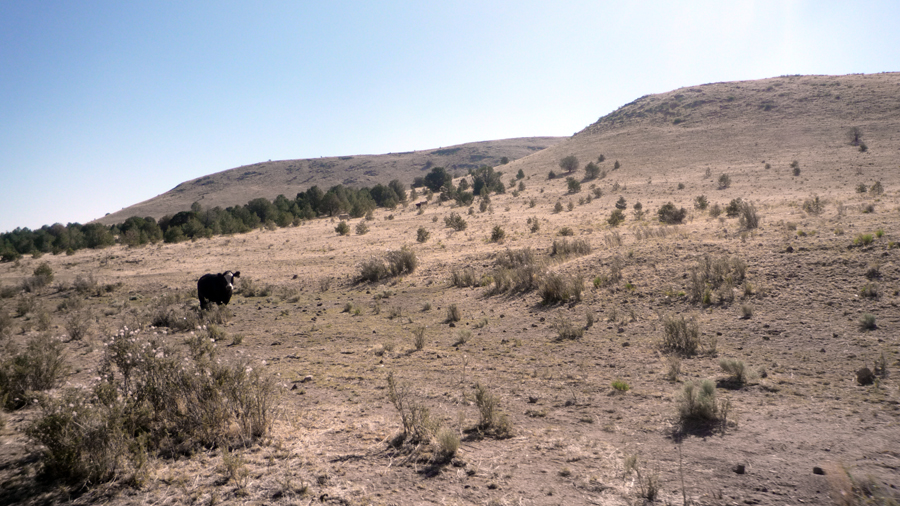
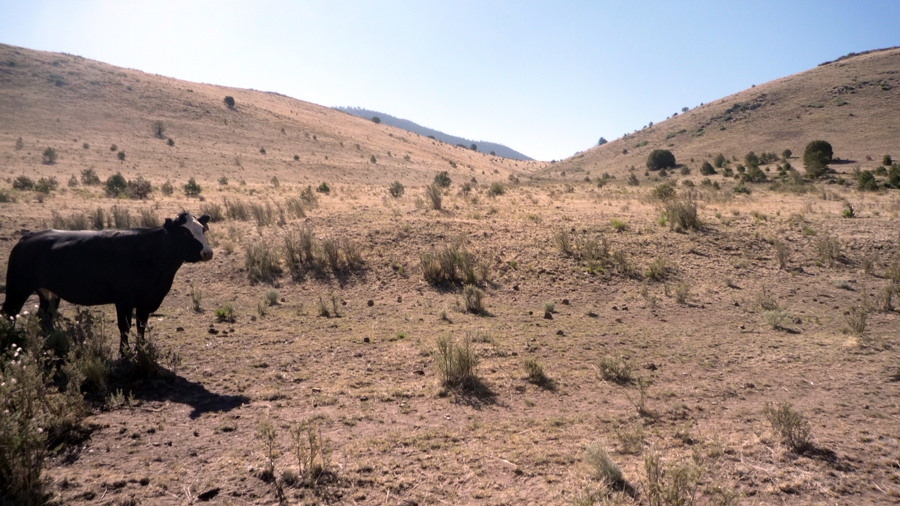
Amount of land you need for a cow here:
Estimates vary from 90-200 acres per animal.
Forage efficiency:
Both elk and cattle compete for the same types of forage of mainly grass and low browse (deer eat browse)
Elk:Cattle efficiency is 1:2.4 which means cattle need to eat almost two and half times as much browse to reach the same nutritional benefits.
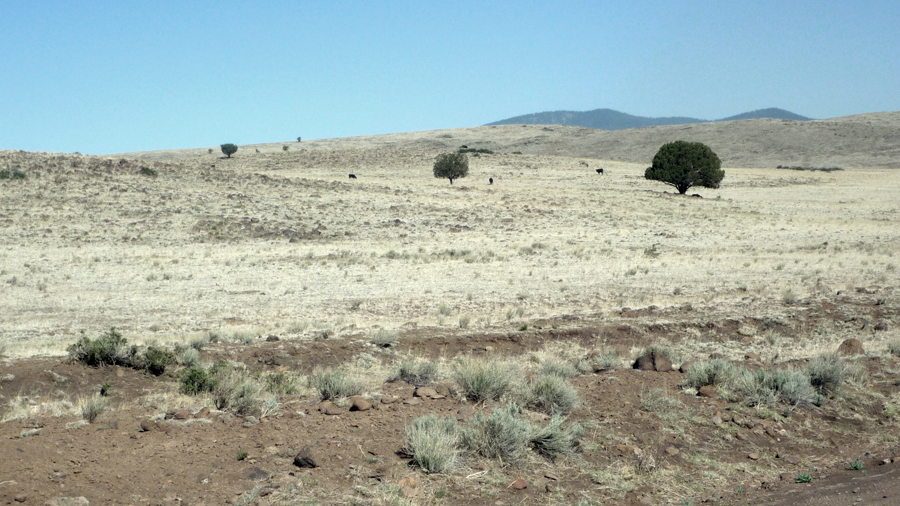
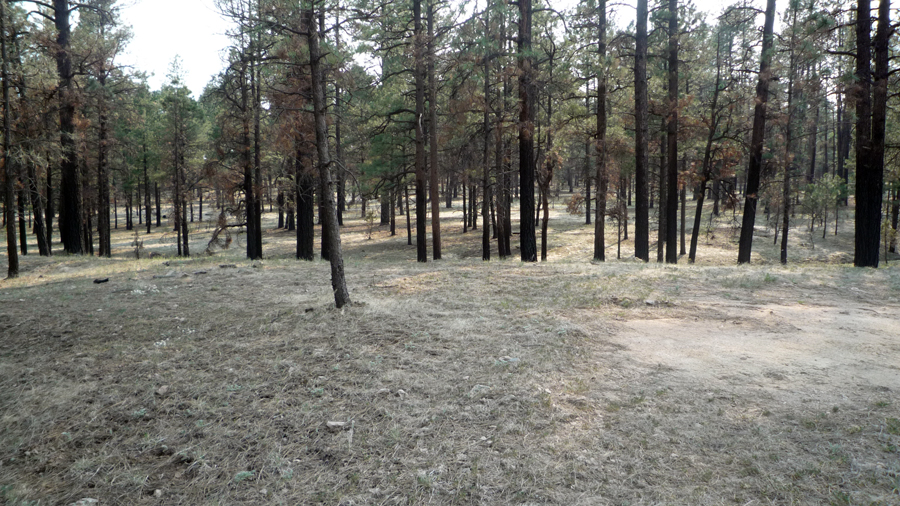
This forest is deep in Forest Service land, though it looks as tame as a ‘walk in the park.”
This is a fairly healthy forest, though with a lot of room for fire to move through here without a
catastrophe.
Here is a good article on fire ecology in this kind of forest ecosystem:
Ponderosa Pine Fire Ecology
In short, logging and fire prevention management led to more problematic forests with dense “dog hair” thickets and forest floor litter. You can see how a fire could sweep through, using the trees and litter as a kind of staircase to reach the really tall pine trees’ crowns. In open stands (which would remain open by periodic naturally-burning fires), the fires would cause minimal damage to the trees, but refresh the grasslands, stimulating new growth.
As a sidenote, I found this translation of Leviticus (VaYikra) 26:3 – 27:34. It’s not a Christian god speaking here, but an old, vengeful Jewish one. I’m not sure why this strikes the right ending chord, but it does.
I will send the wild animals among you, killing your children, destroying your livestock, and reducing your population, so that the roads will become deserted.

